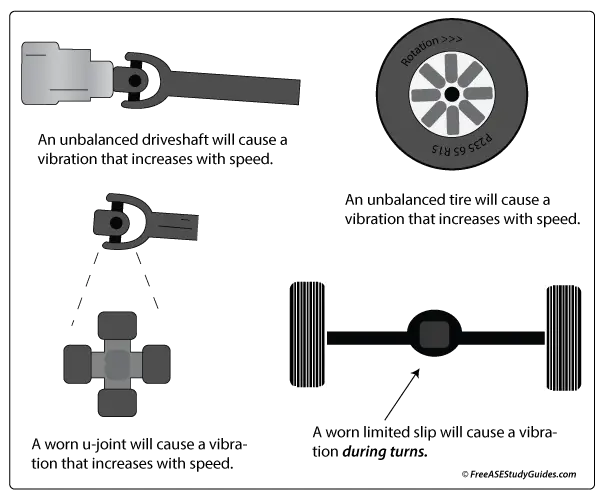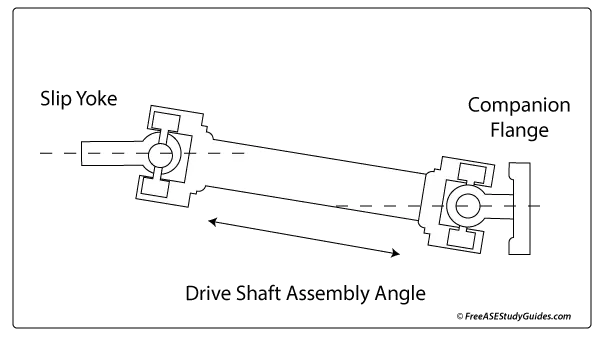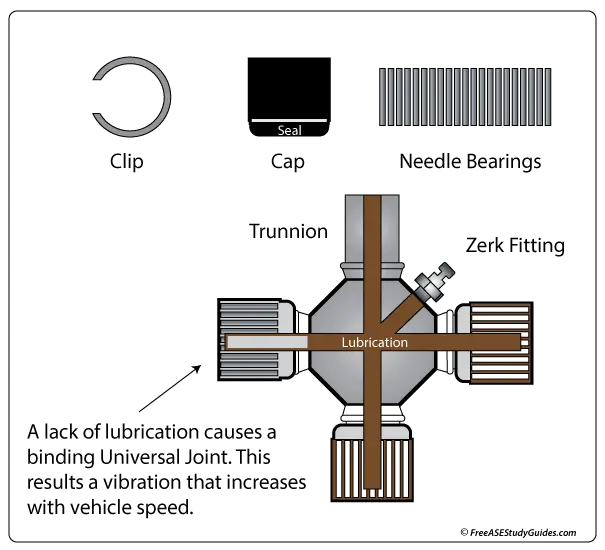Driveline Vibrations

Driveline vibration that increases with vehicle speed can be caused by the driveshaft, universal joint, or wheels and tires. A worn limited-slip differential can chatter and cause vehicle vibration while turning. Vehicle vibrations can be caused by suspension or driveline abnormalities.

Driveshaft: An unbalanced driveshaft causes a vibration that increases with vehicle speed. The driveshaft can become damaged or dented. Undercoating, mud, or a missing balance weight causes the driveshaft to spin out of balance. It results in a vibration that increases with vehicle speed.

Universal Joints: Worn U-Joints are most noticeable while accelerating and decelerating. The most common cause of U-Joint replacement is lack of lubrication. It causes the U-Joint to overheat, turning blue. The joint will start to squeak and cause a vibration that increases with vehicle speed. This noise worsens and ends in a loud clunk whenever the driver places the transmission into gear.

Unbalanced tire: A tire that is unbalanced or suffering from excessive runout will vibrate as it approaches highway speed. If it's severely out of round, it will be felt at much slower speeds and would need replacement to fix the problem. The same is true for the rims. Today's vehicles are equipped with alloy wheels that require stick-on weights. Check if one of these weights may have fallen off after the tire was balanced.